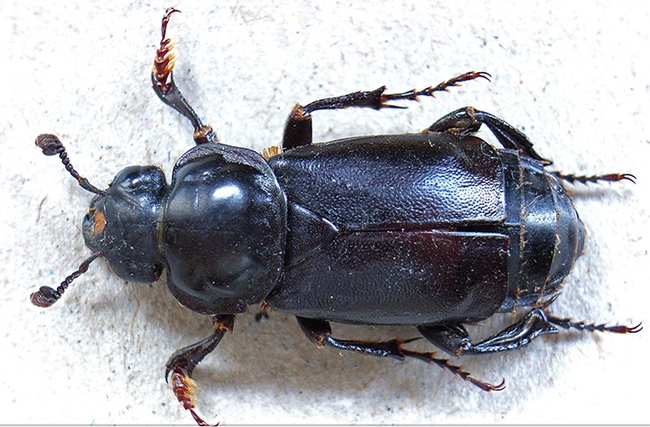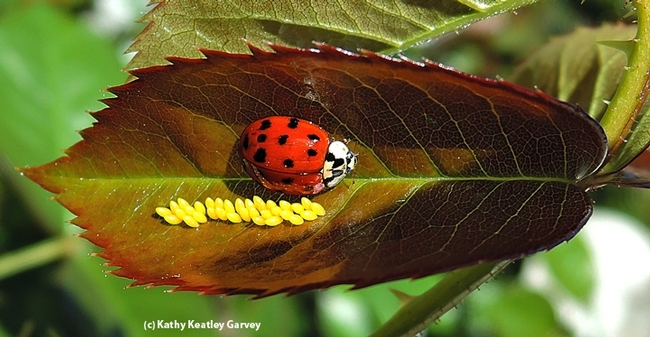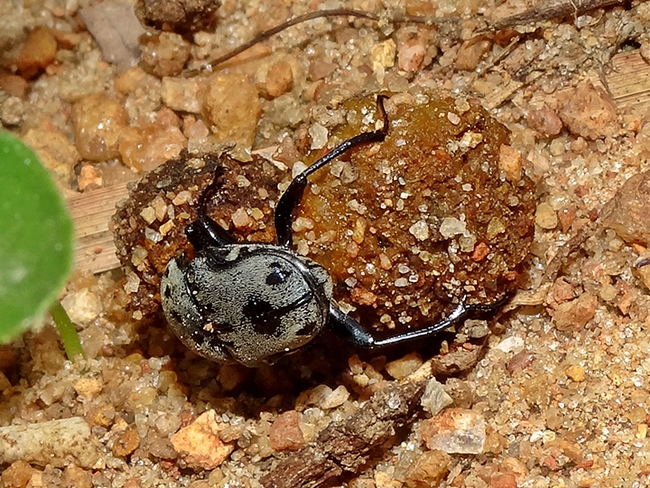- Author: Kathy Keatley Garvey
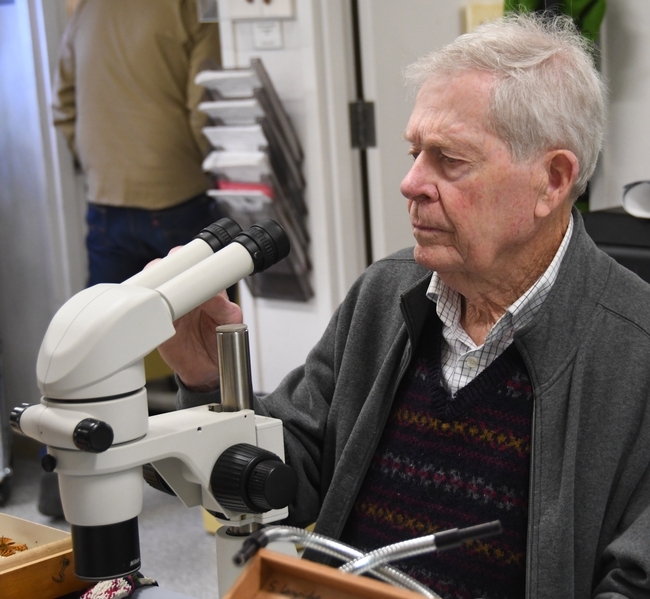
Powell was a Bohart Museum associate and a scientific collaborator, identifying scores of insects and attending many of the Lepidopterist Society meetings held there.
The open house, free and family friendly, is set from 7 to 11 p.m., Saturday, July 22 in Room 1124 of the Academic Surge Building, 455 Crocker Lane, UC Davis campus.
Plans call for scientists to set up their traditional blacklighting (ultraviolet or UV) display to attract moths and other night-flying insects. Bohart Research Affiliate John De Benedictus, a retired UC Davis Staff Research Associate, also known as "The Moth Man," usually heads the blacklighting project with several other scientists. De Benedictus received his master's degree in 1988 from UC Berkeley, studying with Powell. "I spent more time in the field with Jerry than any other grad student," he related. "I was privileged to be Jerry's student and lucky to have become his friend."
Jerry, born May 23, 1933 in Glendale, Calif., received his bachelor's degree in entomology at UC Berkeley in 1955 and his doctorate there in 1961. One of his most-read books, co-authored with Charles Hogue, is California Insects, Volume 44, published in 1980. The second edition, co-authored by Kip Will, Daniel Rubinoff and Powell and covering more than 600 species, was published in October, 2020.
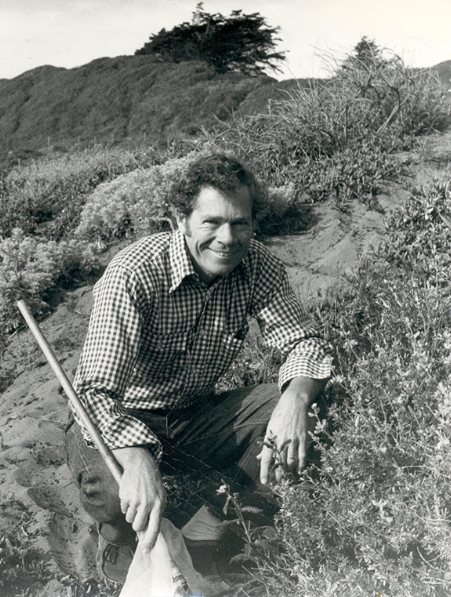
In a tribute to Powell on its website, the Essig Museum posted in part:
"In his teen years he was heavily influenced by Charles 'Harbie' Harbison, who ran the Junior Naturalist Program at the San Diego Museum of Natural History, and sparked an interest in Jerry for butterflies and moths. Seeing his potential, Harbie recommended Jerry for the Entomology program at UC Berkeley, where he received his BS in 1955 and his PhD in 1961. While climbing through the ranks of Junior Entomologist (1961-62), Assistant Entomologist (1962-67), Associate Entomologist (1967-73), Entomologist (1973-94), Lecturer in Entomology (1964-69), Associate Professor (1969-73), and Professor (1973-94) at UC Berkeley, Jerry also became Curator (1972-2018) and Director (1993-1999) of the Essig Museum of Entomology (1972-1999) and Project Leader for the California Insect Survey (1963-1999). Although he retired as Director in 1999, Jerry remained a professor of the Graduate School until 2012 and maintained an active research program in Lepidoptera life histories and systematics until 2018, advising many students along the way. (See more on Essig website.)"
"Jerry's rearing program was the most extensive in the history of the study of New World Microlepidoptera," according to the Essig post. "For over 50 years he and his students processed more than 15,000 collections of larval or live adult Lepidoptera. Resulting data encompass more than 1,000 species of moths, through rearing either field-collected larvae or those emerging from eggs deposited by females in confinement. This total includes more than 60% of an estimated 1,500 species of Microlepidoptera occurring in California."
Powell gained international recognition when he detected the agricultural pest, the light brown apple moth, Epiphyas postvittana, in a ultralight (UV) trap on July 19, 2006 in his backyard in Berkeley.
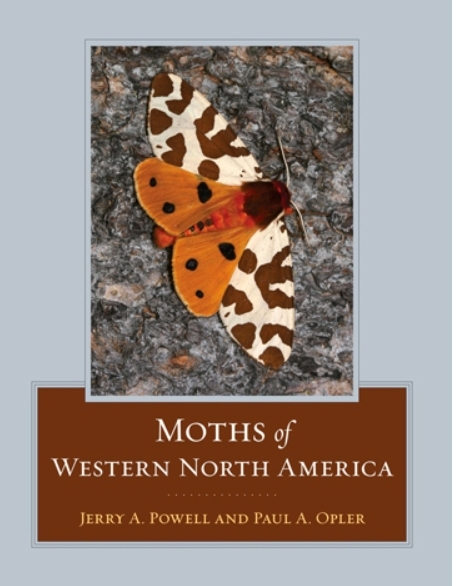
"A consummate field biologist, Jerry's knowledge and interests were broad, allowing him to read landscapes and discover the most interesting and cryptic of species interactions," Oboyski noted. "This is well documented in over 220 publications, but also in the 60+ years of his field notes and rearing records that we are currently digitizing. He is the collector of over 400 holotypes of various insect orders, described over 170 species and 14 genera of moths, and honored by 41 patronyms. He also published papers on Hymenoptera, Coleoptera, Diptera, Dermaptera, and a Nematode. His legacy is impressive and will long be remembered."
Powell described himself as a "MothNut" on his vehicle license plate, and also displayed a sticker, "Larvae on Board."
The Bohart Museum, directed by UC Davis distinguished professor Lynn Kimsey, is the home of a global collection of eight million insect specimens; a live insect petting zoo; and a gift shop.
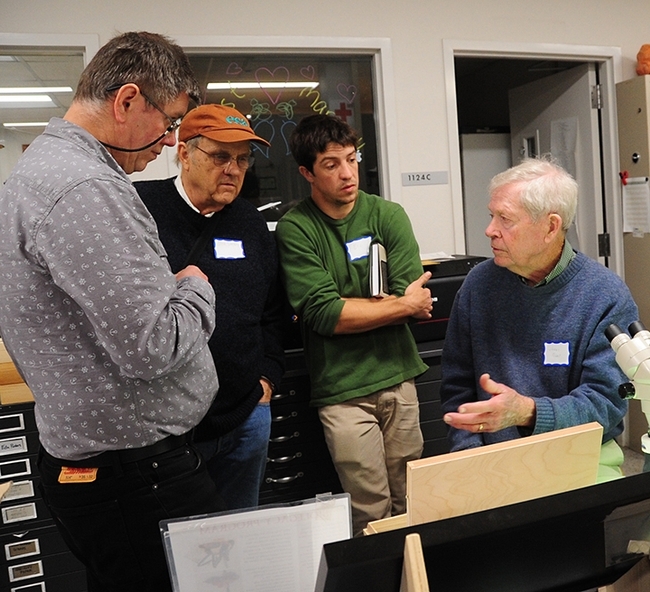
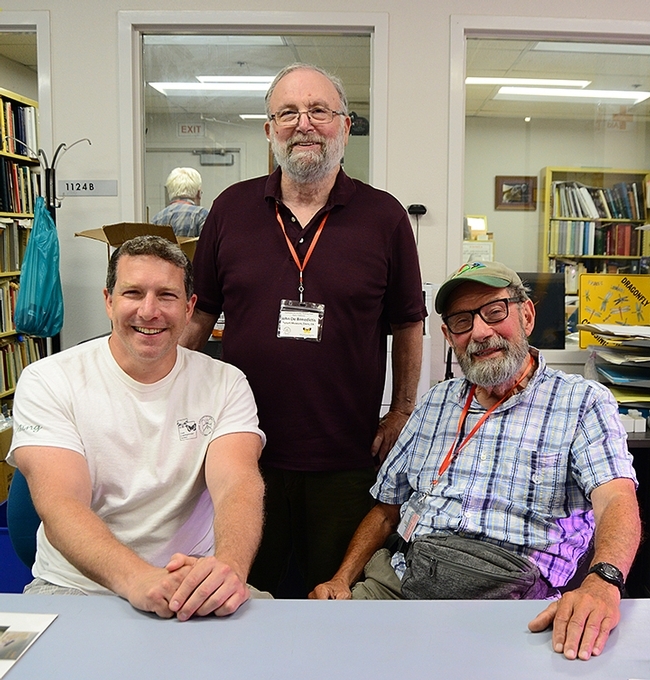
- Author: Kathy Keatley Garvey
"I just got bit by a brown recluse spider in California."
No, you didn't--unless you recently returned from a state where they are established or handled one shipped from that area. There are no established populations of Loxoceles reclusa in California.
So said doctoral candidates Emma Jochim and Xavier Zahnle of the Jason Bond arachnology lab when they dispelled myths in their 30-minute, family friendly session about arachnids at the Bohart Museum of Entomology open house, "Many Legged-Wonders," on Saturday, March 18. First-year doctoral student Iris Quayle of the Bond lab moderated the session. Their major professor, Jason Bond, is the Evert and Marion Schlinger Endowed Chair in Insect Systematics, UC Davis Department of Entomology and Nematology, and associate dean, College of Agricultural and Environmental Sciences.
Jochim and Zahnle covered scores of myths. Here are their answers (abbreviated and shared here by Iris Quayle)
Myth: Arachnids and myriapods are insects.
Answer: No, they're not insects. You can tell them apart by the number of body segments and legs. Arachnids have two body segments and 4 pairs of legs. Insects have 3 body segments and 3 pairs of legs, and myriapods have lots of body segments with either one or two pairs of legs per segment.
Myth: Millipedes have 1000 legs and centipedes have 100 legs.
Answer: Only one recently (2021) species of millipedes has 1000 legs, actually 1300 plus, and that is Eumillipes persephone from Australia. Many soil centipedes have more than 100 legs.
Myth: Camel spiders can jump 4 to 6 feet straight up and eat the stomachs of camels.
Answer: Most solifugid species are 2-3 inches in length and definitely cannot bite into hard camel hide. They can have a bit of a bite for humans, but have no venom, though.
Myth: These are all daddy long legs (image shown of a harvester, crane fly, and cellar spider).
Answer: This depends on where you are from regionally. They all are referred to as "daddy long legs." Also, the myth of daddy long legs being super venomous is false as being dangerous to humans. Of this group, only the Pholcids (cellar spiders) have venom. The venom of cellar spiders can kill insects but is too weak to bother humans; their venom composition is very weak.
Myth: Black widows get their name because females always cannibalize males after mating.
Answer: That is why they got their name, but they are not the only spiders who do this. It is actually quite common fpr a a male to offer a nuptial gift in the form of a fly or other food source to deter the female from devouring him.
Myth: This creature (image of an amblypygid shown) exists only in the fictional world of Harry Potter.
Answer: Amblypygids are very real and are arachnids, but not spiders.
Myth: You consume eight spiders in your sleep every year.
Answer: It's highly unlikely that you will ever consume any in your sleep.
Myth: Every tick will give you a deadly disease
Answer: Ticks are vectors for lots of diseases. Here in California only the blacklegged tick carries Lyme disease.
Myth: Baby scorpions are deadlier than adults.
Answer: No, they do not produce enough to be deadly.
Myth: Both millipedes and centipedes bite.
Answer: Only centipedes bite and they are venomous.
Statements for the Audience: True or false?
The audience was invited to call out the answers.
Statement: There are spiders that can spit silk out of their mouth.
Answer: True. The family Scytodidae spit silk as well as produce silk though their spinnerets. Used for mating and prey capture.
Statement: Maternal care can be seen in some arachnids and myriapods.
Answer: True. Many arachnids carry their young on their backs, and myriapods will protect their egg clutch.
Statement: The grasshopper mouse is immune to scorpion venom.
Answer: True. Bark scorpions comprise the majority of its diet.
Statement: Some myriapods and all scorpions fluoresce.
Answer: True, main theories for scorpions are that they use this to communicate in the dark or to warn of predators. Main theory for myriapods is that it is to warn of predators. Some myriapods are eyeless (blind).
Bohart Open House. The Bohart Museum open house, held from 1 to 4 p.m., featured displays of arachnids. Visitors conversed with the scientists and held Madagascar hissing cockroaches and walking sticks from the Bohart's live petting zoo. Directed by UC Davis distinguished professor Lynn Kimsey, the Bohart Museum houses a global collection of eight million insect specimens, plus the petting zoo and a gift shop. Located in Room 1124 of the Academic Surge Building, 455 Crocker Lane, UC Davis campus, it is open to the public Mondays through Thursdays, from 8 a.m. to noon, and 1 to 5 p.m. More information is available on the Bohart website at https://bohart.ucdavis.edu or by emailing bmuseum@ucdavis.edu.
Resources on brown recluse spiders (Rick Vetter, UC Riverside)
- How to Identify and Misidentify a Brown Recluse Spider
- Myth of the Brown Recluse: Fact, Fear, and Loathing
- Recluse Spider Map
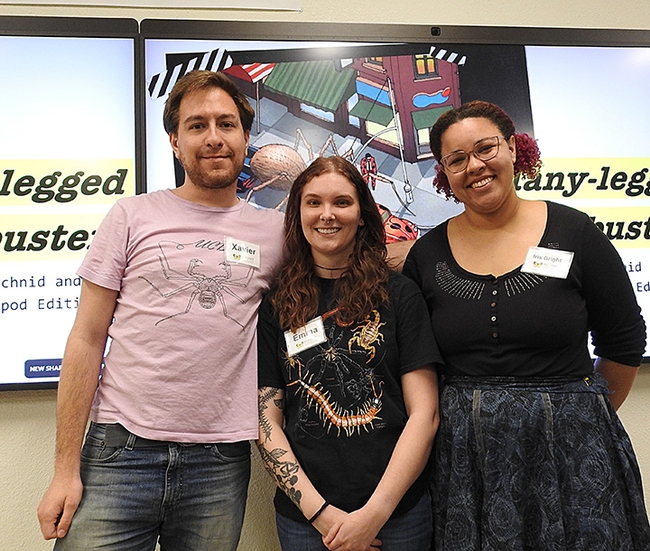
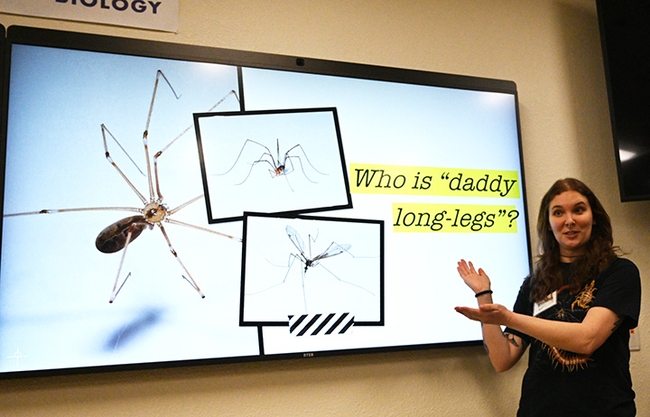
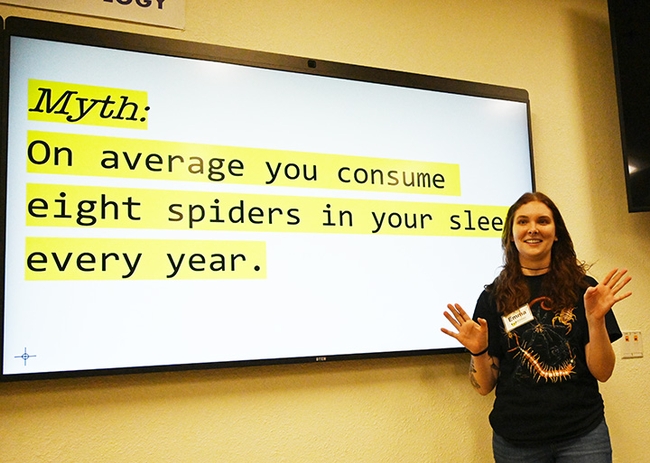
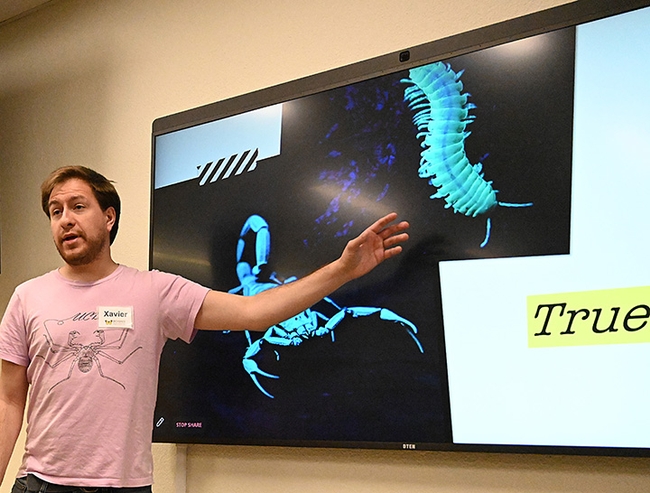
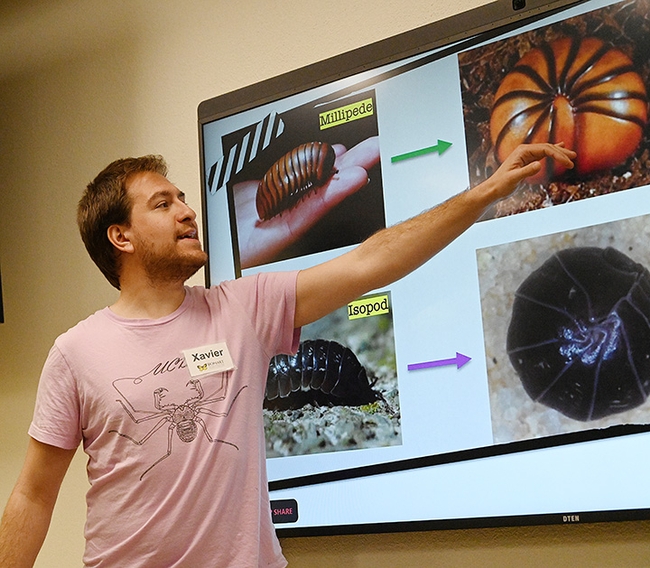
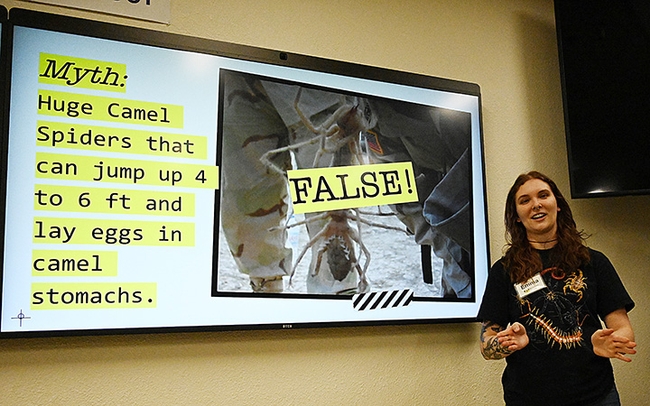
- Author: Kathy Keatley Garvey
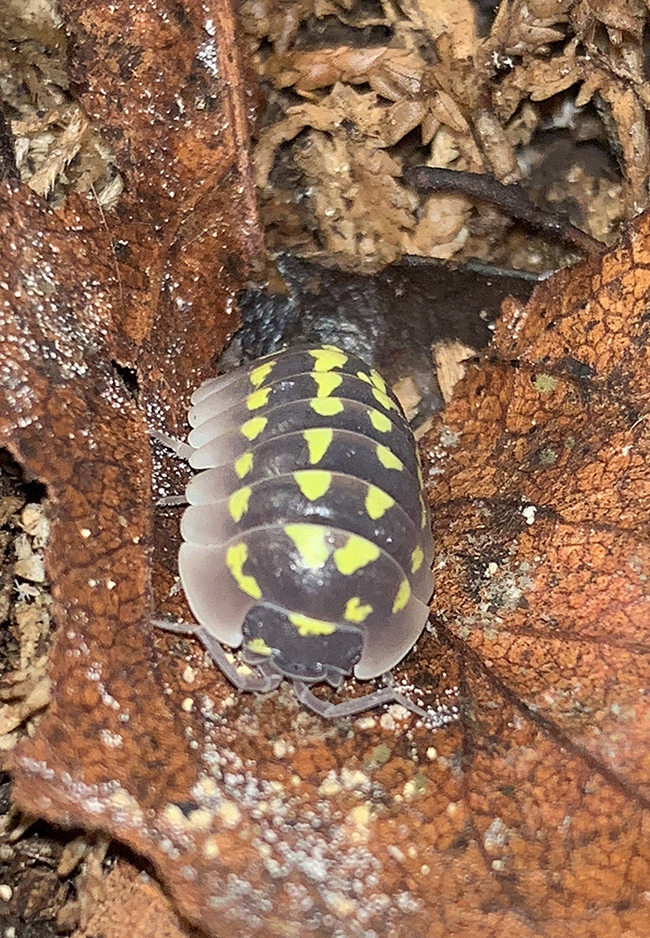
Following on the heels of its 2022 open house on "Eight-Legged Wonders," the Bohart Museum of Entomology will showcase spiders, millipedes, centipedes, scorpions, tarantulas and isopods—and more—at its open house themed “Many-Legged Wonders” on Saturday, March 18.
The event, free and family friendly, will be from 1 to 4 p.m. in Room 1124 of the Academic Surge Building, 455 Crocker Lane, UC Davis campus. A family arts and crafts activity is also planned.
Tabatha Yang, education and outreach coordinator for the Bohart announced that doctoral candidates Emma Jochim and Xavier Zahnle of the Jason Bond arachnology lab will dispel myths about spiders and millipedes at a question-and-answer session from 1 to 1:30. Doctoral student Iris Quayle will moderate.
From 1:30 to 4 p.m., will be the general open house with a showing of live animals and specimens. UC Davis student Elijah Shih will display his isopods, which are crustaceans and have 14 legs.
Shih, a third-year transfer student studying neurobiology, physiology and behavior, says that “Isopods come in many morphs and sizes. There are many colorful and beautifully patterned isopods, some natural, some man made. Isopods are crustaceans and require moisture to breathe and molt properly. Some species have the ability to conglobate or roll up in to the ball where as others do not. They are great for helping create a bioactive system for reptiles, planted tanks, and a great feeder for young reptiles and amphibians.”
“There are many isopod species in the world,” Shih related, “and at least five common isopod species that are found in California: Porcellio laevis, Porcellio scaber, Armadillidium vulgare, Porcellio dilatatus, and Cubaris marina. Their morphs are considered wild type.”
Shih, who hopes to pursue a career in veterinary medicine, said he houses “many reptiles, both aquatic and terrestrial, such as the box turtle and gargoyle gecko. I wanted to create bioactive environments for my reptiles—(mainly to not have to pick up the feces)-- so I looked for ways to make that possible. I need something that was small, agile, prolific, and safe to be eaten. Isopods, better known as Rollie pillows or pill bugs, are the best solution for me. I had my isopods, but to complete the cleanup crew, I added springtails to help clean up any leftover food, but more importantly, the mold.”
Bohart Museum research associate Brittany Kohler, the "zookeeper" of the Bohart petting zoo, says the current residents include:
- Princess Herbert, a Brazilian salmon-pink bird-eating tarantula (Lasiodora parahybana), age estimated to be around 20 (current oldest resident)
- Peaches, a Chilean rose hair tarantula (Grammostola rosea)
- Coco McFluffin, a Chaco golden knee tarantula (Grammostola pulchripes)
- Beatrice, a Vietnamese centipede (Scolopendra subspinipes), newest resident
- Two black widows (Latrodectus hesperus)
- One brown widow (Latrodectus geometricus)
Among the other residents are Madagascar hissing cockroaches, a giant cave cockroach, stick insects, a bark scorpion and ironclad beetles.
The Bohart Museum, directed by UC Davis distinguished professor Lynn Kimsey, houses a global collection of eight million insect specimens, plus the petting zoo and a gift shop stocked with insect-themed books, posters, jewelry, t-shirts, hoodies and more. Dedicated to "understanding, documenting and communicating terrestrial arthropod diversity," the Bohart Museum was founded in 1946 and named for UC Davis professor and noted entomologist Richard Bohart. The insect museum is open to the public Mondays through Thursdays, from 8 a.m. to noon, and 1 to 5 p.m.
More information is available on the Bohart website at https://bohart.ucdavis.edu or by emailing bmuseum@ucdavis.edu.
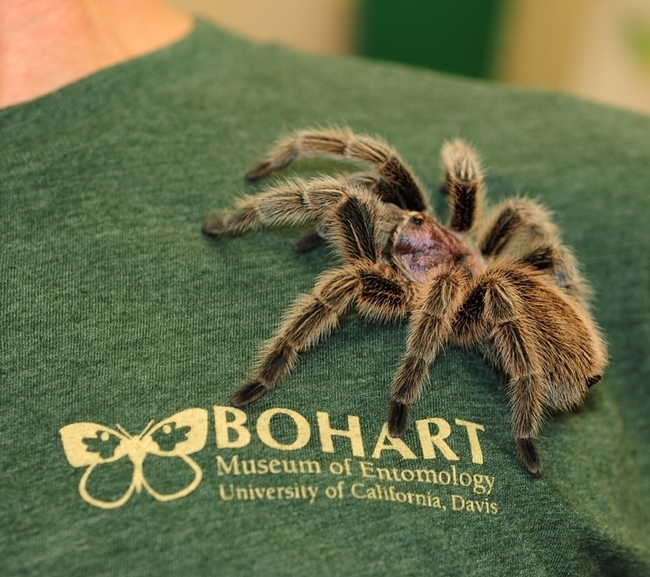
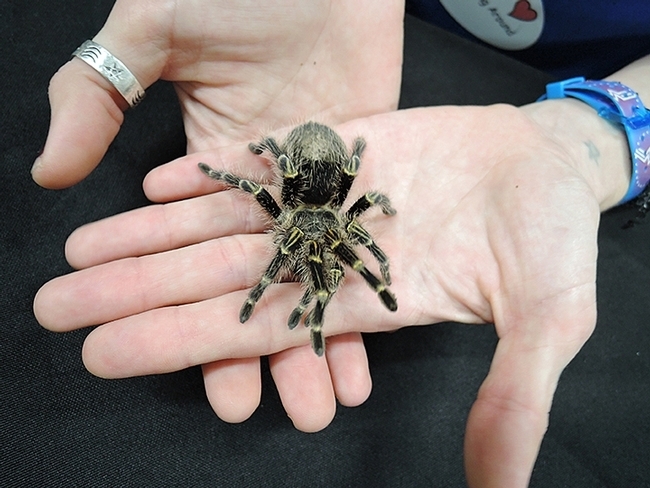
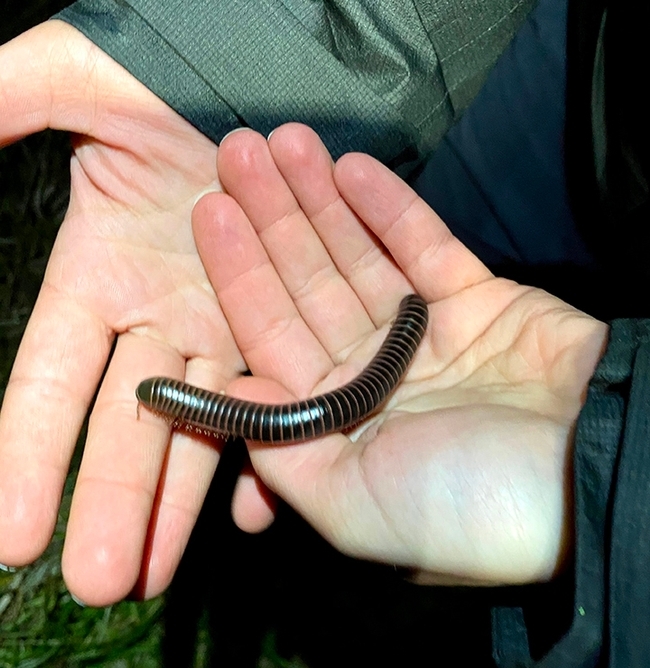
- Author: Kathy Keatley Garvey
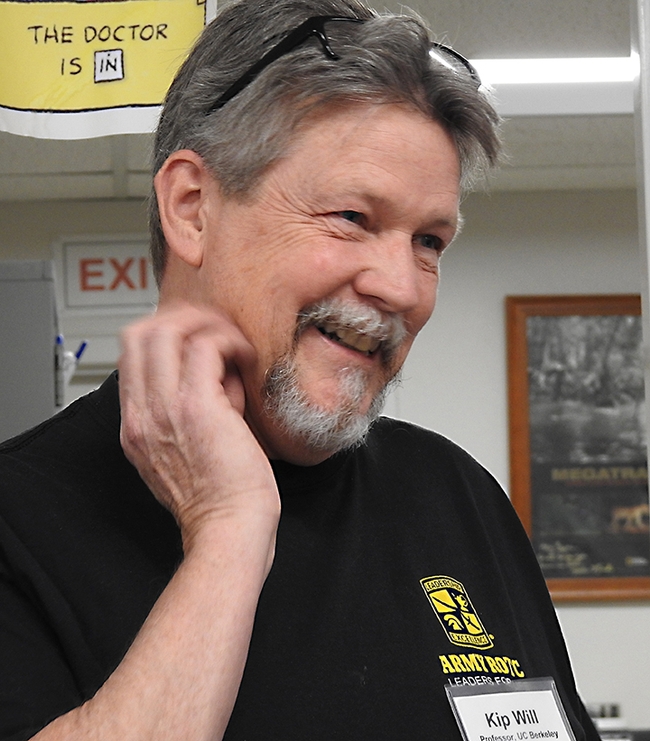
And it was all about the beetles: "Beetlemania."
Some 500 visitors browsed the displays at the Bohart Museum of Entomology open house, chatted with scientists, photographed the specimens, engaged in arts and crafts, and then headed over to the petting zoo to introduce themselves to the Madagascar hissing cockroaches and stick insects.
The event took place from 1 to 4 p.m. in the Bohart Museum's headquarters in Room 1124 of the Academic Surge Building, 455 Crocker Lane. Bohart personnel greeted the guests: Lynn Kimsey, director of the Bohart Museum; Tabatha Yang, education and outreach coordinator; Brennen Dyer, collections manager; Brittany Kohler, research associate; Jeff Smith, curator of the Lepidoptera collection; and Greg Kareofelas, Lepidoptera host assistant.
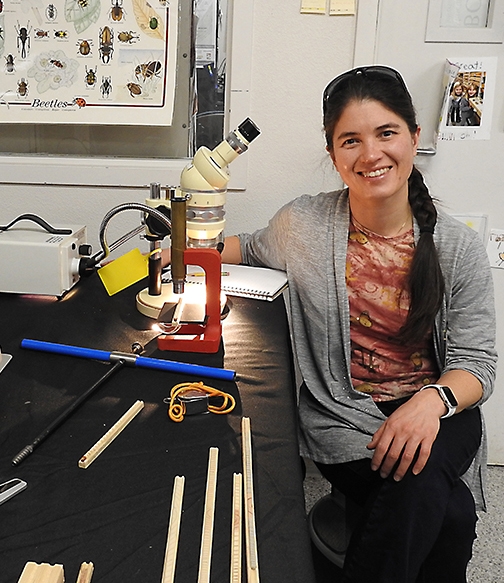
- Beetles from Belize: Professor Fran Keller of Folsom Lake College, a Bohart Museum scientist, and her assistant, Iris Bright, a graduate student in the Jason Bond lab.
- Carabid beetles: Kipling "Kip" Will, associate professor with the UC Berkeley Department of Environmental Science, Policy and Management
- Burying beetles: Tracie Hayes, a doctoral candidate and burying beetle researcher in the laboratory of Professor Louie Yang, UC Davis Department of Entomology and Nematology. (She presented a video she created, "A Clearance of Death on Behalf of Life" at https://youtu.be/cGLOE7SrbiU.)
- Bark beetles: Curtis Ewing, a senior environmental scientist with Cal Fire's Forest Entomology and Pathology
- Children's tree-related activities: Jonelle Mason, a UC Agriculture and Natural Resources (UC ANR) employee and coordinator of Project Learning Tree (PLT) California, an initiative of the Sustainable Forestry Initiative,
- Tree cores and boring tools: UC Davis graduate student Jennifer Cribbs of the Graduate Program of Environmental Policy and Management
- Diabolical ironclad beetles: Brittany Kohler, Bohart research associate
- Family arts and crafts: Allen Chew, Sol Wantz and Kat Taylor, all UC Davis undergraduate students
- Petting zoo: Kaitai Liu, undergraduate student in the Jason Bond lab; Veronica Casey, graduate student in Shahid Siddique lab; and Grace Horne, graduate student in Emily Meineke lab
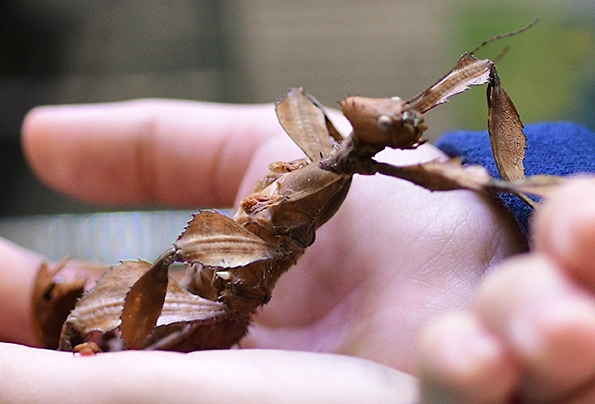
The Bohart Museum, dedicated to "understanding, documenting and communicating terrestrial arthropod diversity," was founded in 1946 and named for UC Davis professor and noted entomologist Richard Bohart. It houses a global collection of eight million insect specimens, plus a live "petting zoo," featuring Madagascar hissing cockroaches, walking sticks and tarantulas; and a year-around gift shop, stocked with insect-themed books, posters, jewelry, t-shirts, hoodies and more. The museum is open to the public from 8 a.m. to noon and from 1 to 5 p.m., Mondays through Fridays.
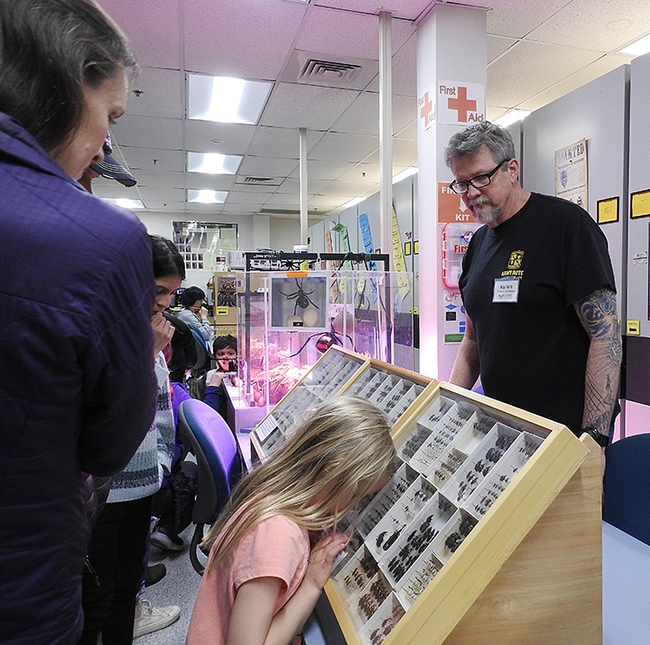
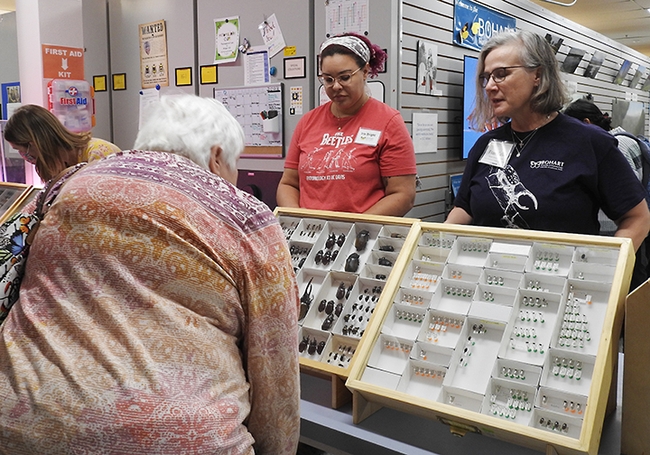
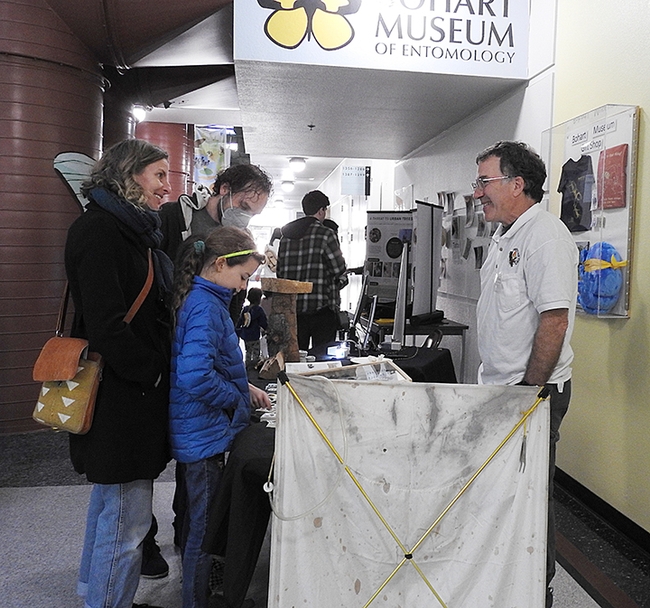
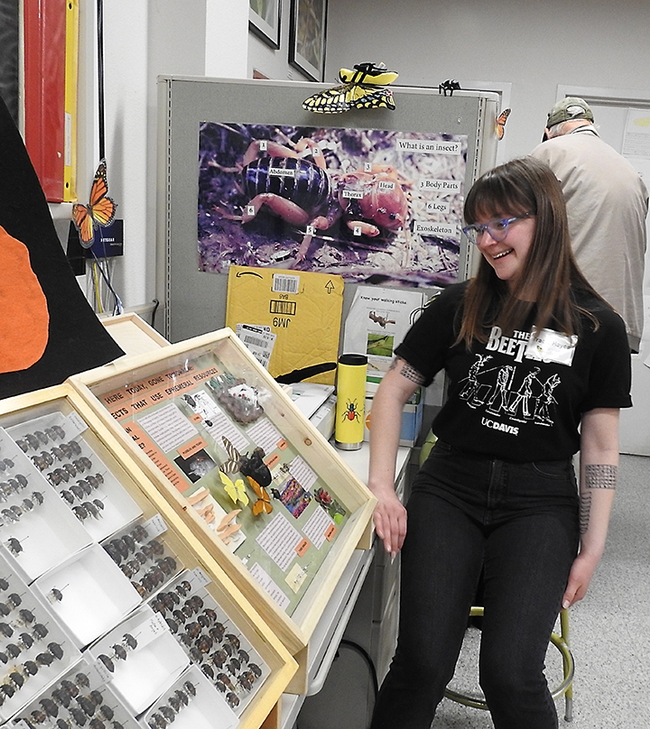
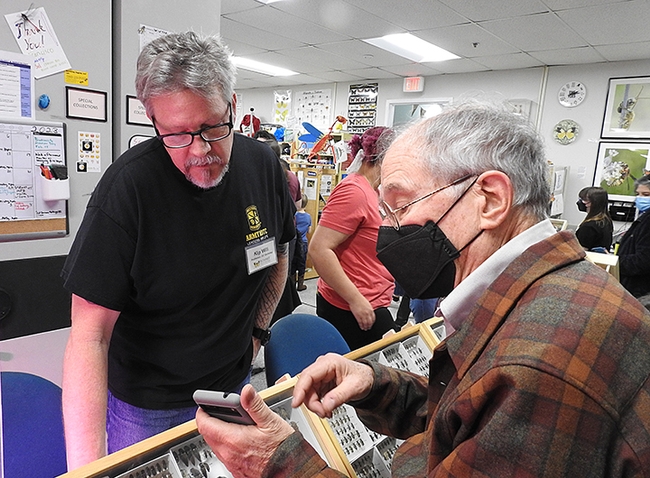
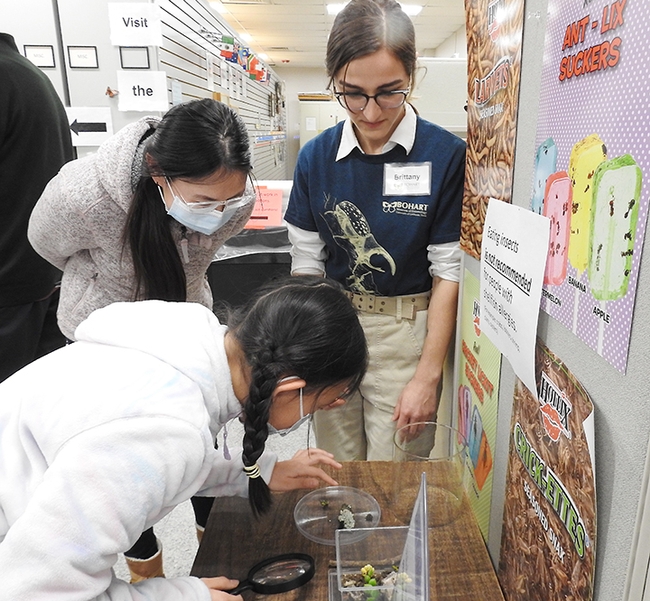
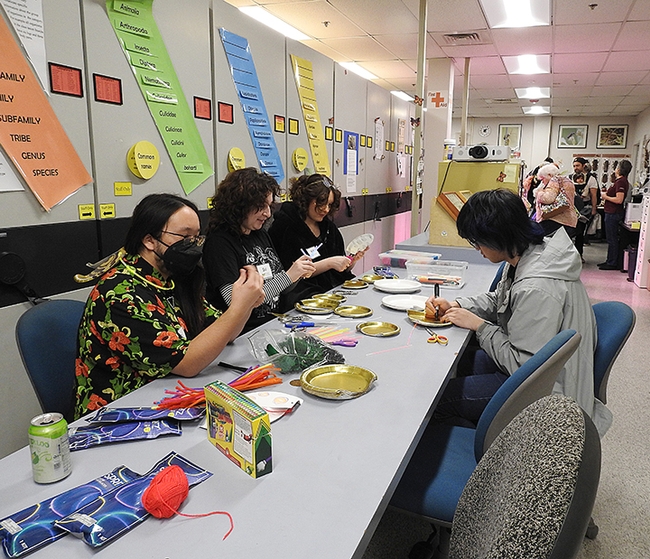
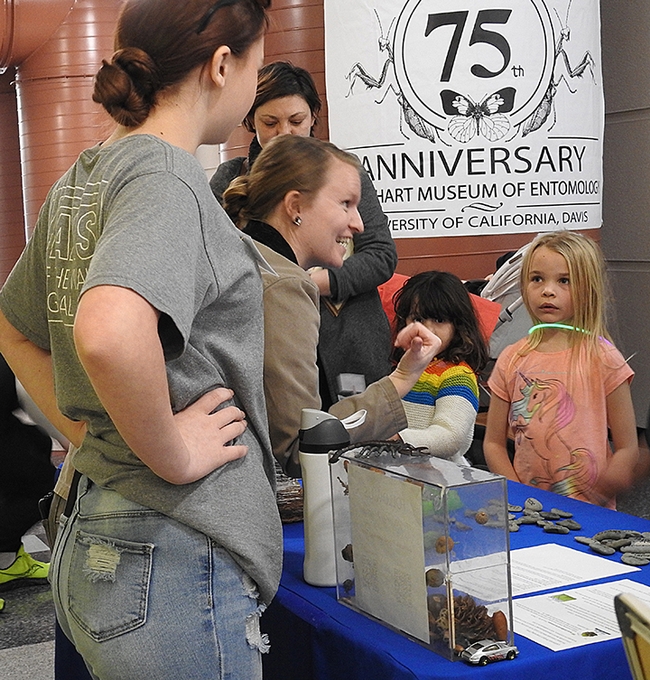
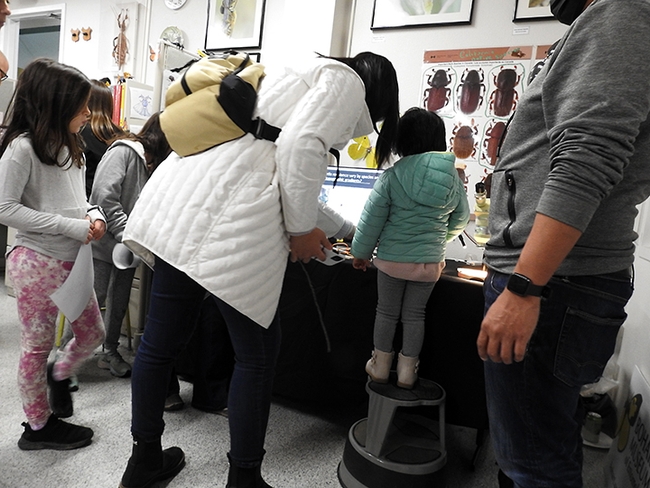
- Author: Kathy Keatley Garvey
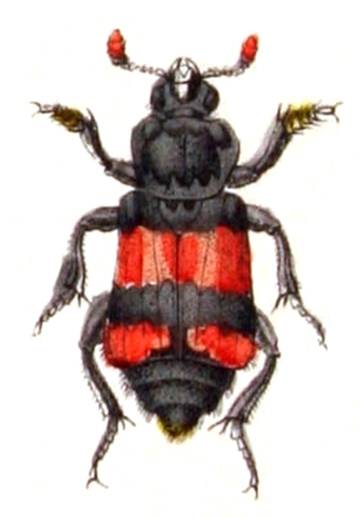
And with an exclamation point!
That's the theme of the Bohart Museum of Entomology open house, set from 1 to 4 p.m., Sunday, Jan. 22 in Room 1124 of the Academic Surge Building, 455 Crocker Lane, UC Davis campus.
It's free, family friendly and open to the public. Scientists will display scores of beetle species, ranging from burying beetles and darkling beetles to dung beetles and lady beetles (aka ladybugs).
Among the presenters will be Tracie Hayes, a doctoral student in the laboratory of Professor Louie Yang, UC Davis Department of Entomology and Nematology. She researches burying beetles, genus Nicrophorus, at the Bodega Marine Reserve. She will show a video she created, display specimens, and answer questions. Burying beetles, as the name implies, are known for burying the carcasses of small vertebrates, such as mice, squirrels and birds, and using them as a food source for their larvae. The American burying beetle, Nicrophorus americanus, endemic to North America, is a critically endangered species.
Folsom Lake College professor Fran Keller, a Bohart Museum scientist and a UC Davis doctoral alumna of entomology, will discuss the beetles she and other scientists collected in Belize.
"In November I started working in the Natural History Museum London Coleoptera collection, working on Belize Cerambycidae to facilitate identification and then catalog specimens for the Belize National Insect Collection," Keller said. "I worked with Larry Bezark, via the internet/email/Google Drive, who is retired from the California Department of Food and Agriculture. There were 28 new country records for Belize and two new species to science that Larry will describe."
Scientists from the California Department of Food and Agriculture also will be a key part of the open house.
Beetles, belonging to the order Coleoptera, the largest insect order, total some 400,000 species. They make up "about 40 percent of all insect species so far described, and about 25 percent of all animals," according to Wikipedia.
Beneficial beetles include the lady beetle, aka ladybug, which devours aphids and other small soft-bodied insects. Another beneficial beetle: the dung beetle, which feed on feces. Serious pests include the boll weevil, the Colorado potato beetle, the coconut hispine beetle, and the mountain pine beetle.
The family arts-and-crafts activity at the open house will be coloring a burying beetle, art that's the work of Tracie Hayes.
The Bohart Museum, dedicated to "understanding, documenting and communicating terrestrial arthropod diversity," is directed by Lynn Kimsey, UC Davis distinguished professor of entomology. Founded in 1946 and named for UC Davis professor and noted entomologist Richard Bohart, it houses a global collection of eight million insect specimens; a live "petting zoo," featuring Madagascar hissing cockroaches, walking sticks and tarantulas; and a year-around gift shop, stocked with insect-themed books, posters, jewelry, t-shirts, hoodies and more.
The museum is open to the public from 8 a.m. to noon, and 1 to 5 p.m., Mondays through Thursdays.
